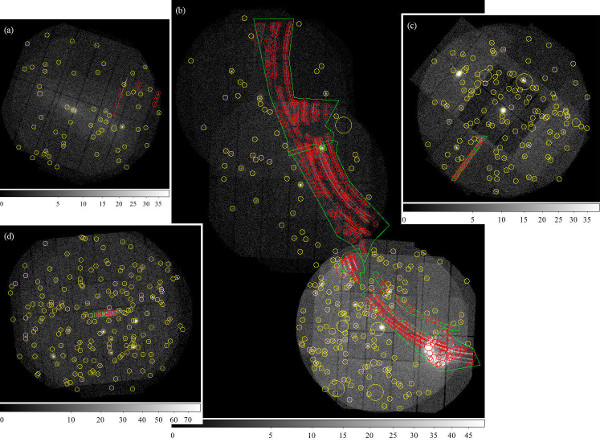Quality assessment
Although source-detection parameters are chosen opting for a good balance between detection completeness and spurious source content and stacked source detection likely reduces the spurious content compared to individual observations, false detections remain: for example along instrumental features, stray light, or residuals in the PSF fit to bright sources. The catalogues thus include information on the detection quality in the form of flags that indicate whether a source is probably spurious or located in a problematic region where its parameters are determined less precisely than in clean regions.
Quality assessment is done in two steps: automated by the SSC-internal SAS task dpssflag and manually by visual inspection of each stack.
Automated quality assessment
The SSC-internal task dpssflag defines nine boolean flags for each exposure of a source, coding several poor observing conditions which potentially deteriorate the accuracy of the detection or its parameters. They are included as string flags in the catalogue. The default value a flag is "false". A "true" flag should be read as a warning about certain conditions that might deteriorate the quality of a detection and/or its parameters. This includes * sources with limited detector coverage (less than 50% of the PSF area), * blends with bright or extended sources, * sources on or close to known artefacts, in particular bad pixels, a bright MOS 1 corner, and bright PN columns.
An overview of the flags is given in the Table below. The all-EPIC flag EP_FLAG is true in all bits in which an instrument flag is true. The integer summary flag STACK_FLAG summarises the nine flags. Its optimum value is “0”. “1” means reduced detection quality in at least one image. “2” is assigned to potentially spurious sources. If it is “2” in all contributing observations, it is set to “3” in the summary row. The cleanest set can thus be chosen by applying the filter expression STACK_FLAG≤1. Detections with higher flag values can still come from real sources, but are likely to have uncertain fit parameters. Additional manual flags from visual screening have been introduced in the stacked catalogues with version 4XMM-DR9s and are described in the next Section.
Visual screening
 Examples from the manual screening process:
Examples from the manual screening process:
- (a) bad detector features,
- (b) single-reflection patterns,
- (c) RGA diffraction pattern,
- (d) path of a planet in a mosaic-mode observation.
All results of source detection in each stack were screened visually. Manual flags are indicated in the STACK_FLAG and EP_FLAG columns: EP_FLAG is expanded from nine to ten characters by an additional flag (character) at the end of the string which is true (“T”) for manually flagged sources and false (“F”) for the rest. STACK_FLAG is increased by ten if a manual flag is set. The results of the automated flagging are thus preserved in its units’ digit, while the manual flag appears in its tens’ digit. A filtering expression “STACK_FLAG≤1“ removes both sources with the highest automatic flags and sources with a manual flag.
Obviously spurious sources are flagged manually, if
- detections lie on single reflection patterns
- several detections are found on detector features like clusters of bad pixels without any sign of a blended real source
- they are heavily confused with bright extended emission and thus have unreliable source parameters
- several detections lie directly on the PSF spikes of bright sources
- if a bright source is fit with several off-set detections because of extreme pile-up
- emission of a very bright target triggers spurious extended detections
- multiple overlapping sources are fit to large extended emission or to the footprint of a Solar System body
The screening process is not meant to be complete, but shall help users to reject evidently not genuine sources. Sources thus can have automatically set flags and no manual flag, for example in the vicinity of bright or extended sources where their source parameters could be affected by higher uncertainties than in clean areas.

